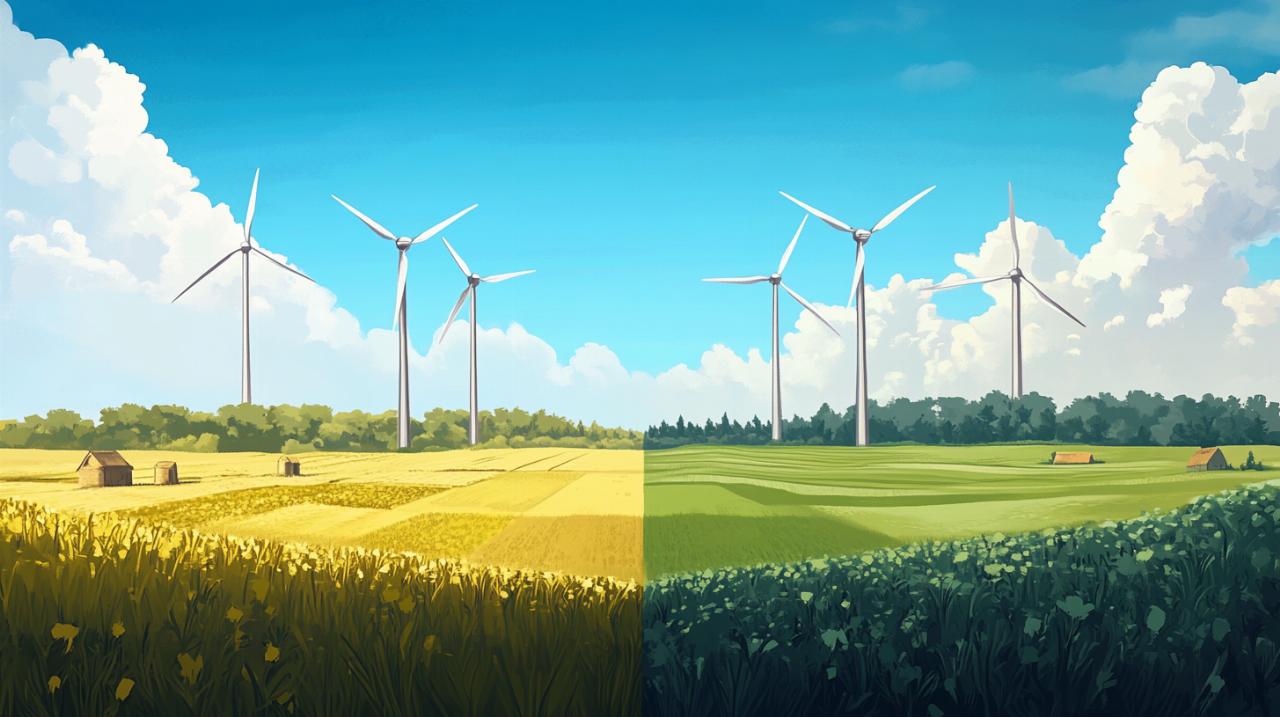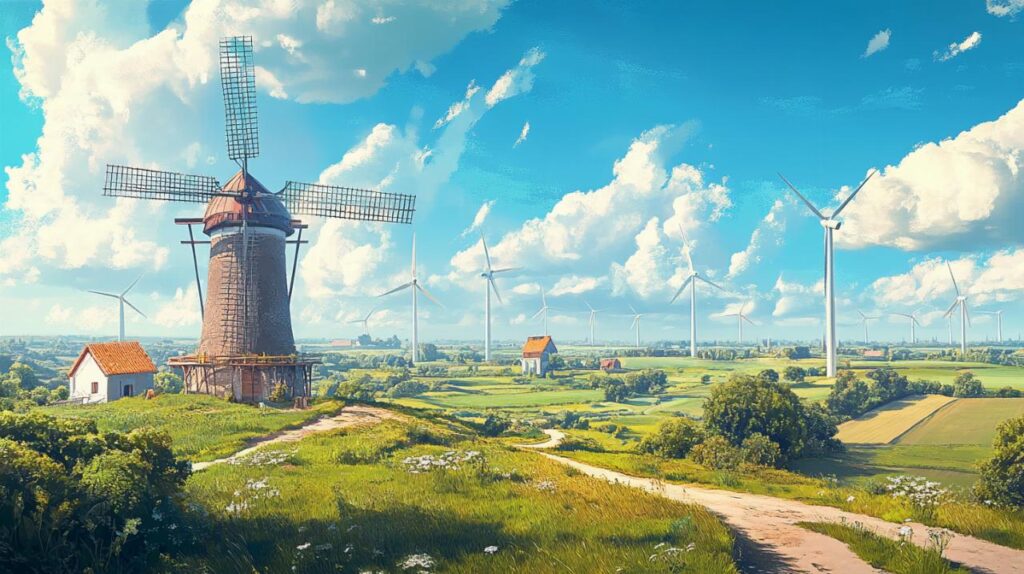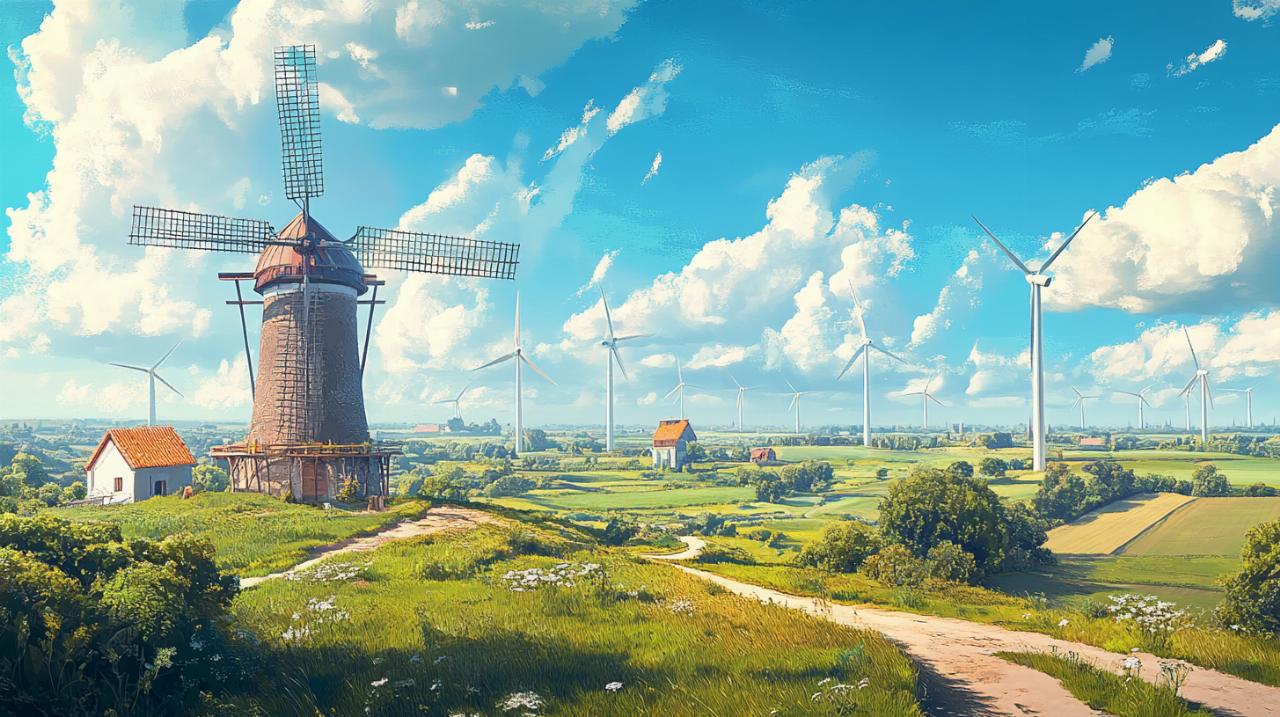From the sun-baked plains of ancient Persia to the sprawling offshore installations dotting today's coastlines, the story of harnessing the wind for human benefit spans thousands of years. Wind energy has evolved from simple sail-driven boats and rudimentary grinding mills into sophisticated machines capable of powering entire cities. This journey through time reveals not only the ingenuity of countless inventors and engineers but also humanity's enduring quest to find cleaner, more sustainable ways to meet its energy needs. Along the way, a series of remarkable individuals have left indelible marks on the development of wind technology, each contributing a vital piece to the puzzle of modern renewable power generation.
Ancient origins: the pioneers of harnessing wind power
Early Windmills in Persia and the Middle East
Long before electricity transformed the world, people recognised the immense potential of moving air. As far back as 5000 BC, civilisations used wind energy to propel boats across rivers and seas, marking the earliest known application of this natural force. By 200 BC, innovators in China had devised wind-powered mechanisms to pump water, while communities in the Middle East employed windmills to grind grain, making food production more efficient. These early machines laid the groundwork for centuries of refinement and experimentation. By the 11th century, wind pumps and mills had become integral to food production across the Middle East, demonstrating how wind power could be adapted to meet essential human needs. The technology was simple yet effective, relying on large sails or vanes that captured the breeze and converted it into mechanical motion, driving millstones or lifting water from wells.
European innovations during the medieval period
As knowledge of wind technology spread, European engineers began to develop their own variations, adapting designs to suit local conditions and requirements. Windmills became a common sight across the countryside, particularly in regions where water power was less readily available. These structures were not merely functional but also emblematic of human ingenuity, their sails turning steadily against the horizon. In the New World, American colonists embraced wind power for a variety of tasks, including grinding grain, pumping water, and even cutting wood. The versatility of windmills made them indispensable in rural areas, where they helped to sustain agricultural communities and support the expansion of settlements. This period of experimentation and adaptation set the stage for the technological leaps that would follow in the 19th and 20th centuries, as inventors sought to harness wind energy for the generation of electricity.
The Birth of Modern Wind Technology in the 19th and 20th Centuries
Charles F. Brush and the First Electricity-Generating Wind Turbine
The transition from mechanical windmills to electricity-generating turbines marked a pivotal moment in the history of renewable energy. In the 1850s, Daniel Halladay and John Burnham created the first commercially viable windmill, which featured an innovative design that automatically faced the wind and maintained a consistent speed by adjusting its sails. This breakthrough made wind power more reliable and easier to use, paving the way for further advancements. A few decades later, in 1888, Charles Brush installed the first wind turbine capable of generating electricity in the United States. Located in Ohio, this impressive machine featured a rotor measuring 56 feet in diameter and produced 12 kilowatts of power, enough to light his home and demonstrate the potential of wind energy for broader applications. Brush's turbine was a testament to the possibilities of converting wind into a usable form of energy, inspiring others to explore the technology further.
Poul la Cour's Contributions to Wind Energy Research
Across the Atlantic, another visionary was making significant strides in wind energy development. Poul la Cour, a Danish inventor and educator, conducted extensive research into turbine design and efficiency. Through careful experimentation, he realised that turbines with fewer blades operated more efficiently than those with many, a finding that would shape the design of wind turbines for generations to come. His work demonstrated the importance of aerodynamics and blade configuration in maximising energy output, laying the foundation for modern turbine engineering. Meanwhile, in Scotland, James Blyth built the first wind turbine in the United Kingdom in 1887, using it to power his home in Glasgow. Although his invention did not gain widespread acceptance at the time, it represented an important step forward in the application of wind technology for electricity generation. These pioneers, working independently yet driven by a shared curiosity, collectively advanced the understanding of how wind could be transformed into a reliable source of power.
Visionaries who shaped contemporary wind turbine engineering
Johannes Juul and the Development of the Gedser Wind Turbine
 As the 20th century progressed, the focus shifted towards creating turbines that could operate reliably over long periods and generate significant amounts of electricity. Johannes Juul, a student and follower of Poul la Cour, played a crucial role in this evolution. His work on the Gedser wind turbine in Denmark demonstrated that well-designed turbines could be both efficient and durable, capable of feeding power into the electrical grid. Juul's contributions helped to establish Denmark as a leader in wind energy technology, a position the country continues to hold today. His designs emphasised simplicity and robustness, qualities that remain essential in modern turbine engineering. The Gedser turbine, operational for many years, proved that wind power could be a practical and economical alternative to fossil fuels, particularly in regions with strong and consistent winds.
As the 20th century progressed, the focus shifted towards creating turbines that could operate reliably over long periods and generate significant amounts of electricity. Johannes Juul, a student and follower of Poul la Cour, played a crucial role in this evolution. His work on the Gedser wind turbine in Denmark demonstrated that well-designed turbines could be both efficient and durable, capable of feeding power into the electrical grid. Juul's contributions helped to establish Denmark as a leader in wind energy technology, a position the country continues to hold today. His designs emphasised simplicity and robustness, qualities that remain essential in modern turbine engineering. The Gedser turbine, operational for many years, proved that wind power could be a practical and economical alternative to fossil fuels, particularly in regions with strong and consistent winds.
Palmer cosslett putnam's smith-putnam wind turbine experiment
In the United States, Palmer Cosslett Putnam embarked on an ambitious project to demonstrate the viability of large-scale wind energy. The Smith-Putnam wind turbine, constructed in the 1940s in Vermont, was a groundbreaking experiment that pushed the boundaries of what was technically possible at the time. With a rotor diameter far exceeding earlier designs, the turbine was capable of generating substantial amounts of electricity, feeding power directly into the local grid. Although the project encountered technical challenges and was eventually discontinued, it provided valuable lessons about the engineering requirements and economic considerations of large wind installations. Putnam's work underscored the potential of wind energy to contribute meaningfully to the electricity supply, inspiring subsequent generations of engineers to pursue ever more ambitious projects. The Smith-Putnam turbine remains a landmark in the history of renewable energy, symbolising the bold vision required to transform an ancient technology into a modern power source.
The modern era: innovations driving today's renewable energy landscape
Advances in Turbine Efficiency and Material Science
The latter half of the 20th century and the early 21st century have witnessed extraordinary progress in wind turbine design, driven by advances in materials science, aerodynamics, and computer modelling. Modern turbines have evolved from modest machines producing a few kilowatts to towering giants capable of generating multiple megawatts of electricity. The GE Haliade X-13, for instance, boasts rotors measuring 220 metres in diameter and stands over 250 metres tall, while the Vestas V236-15.0 MW features a swept area exceeding 43,000 square metres. These enormous structures are marvels of engineering, designed to capture as much wind energy as possible and convert it into electricity with remarkable efficiency. Innovations in blade design, rotor diameter, and turbine height have all contributed to dramatic improvements in performance, making wind power increasingly competitive with traditional energy sources. Offshore wind farms, in particular, have benefited from these advancements, as turbines located at sea can take advantage of stronger and more consistent winds. The world's first offshore wind farm, Vindeby, was built in Denmark in 1991 with 11 turbines totalling 5 megawatts. Since then, offshore installations have grown exponentially in size and output, with countries like the United Kingdom and China leading the way. In 2003, the Blyth offshore wind farm became the first such installation in the UK, marking the beginning of a major expansion in offshore wind capacity. By 2030, the UK aims to have 50 gigawatts of offshore wind generating capacity, a target that reflects the growing importance of wind energy in the nation's energy mix. In 2024, China's wind and solar capacity is predicted to surpass coal, underscoring the global shift towards renewable sources. Looking ahead, future offshore wind developments include innovative technologies such as wind-to-hydrogen systems and floating offshore turbines, which promise to unlock wind resources in deeper waters previously considered inaccessible.
The Role of Government Policy and Investment in Wind Power Growth
The rapid expansion of wind energy over the past few decades has been driven not only by technological innovation but also by supportive government policies and strategic investment. The energy crisis of the 1970s in the United States spurred renewed interest in alternative energy sources, prompting researchers and policymakers to explore the potential of wind power. In 1978, the Public Utility Regulatory Policies Act required utility companies to purchase renewable energy, providing a crucial incentive for the development of wind farms. During the 1980s, California offered tax rebates for clean energy projects, attracting significant investment and leading to the installation of numerous wind turbines across the state. The first wind farm was installed in December 1980 in New Hampshire, featuring 20 turbines with a combined capacity of 30 kilowatts. In the United Kingdom, the Delabole wind farm, created in November 1991 with 10 turbines, marked an important milestone in the country's transition to renewable energy. These early projects demonstrated that wind power could be scaled up and integrated into the electricity grid, paving the way for the massive installations seen today. The economic case for wind energy has strengthened considerably, with onshore wind farm costs averaging 1.61 million pounds per megawatt and offshore wind farm costs averaging 4.49 million pounds per megawatt including transmission infrastructure. As costs have fallen and efficiency has improved, wind energy has become an increasingly attractive option for governments and investors alike. By 2050, wind energy could avoid 12.3 gigatonnes of greenhouse gases, equivalent to removing 1.3 million cars from the roads, while also supporting over 600,000 green jobs in the United States alone. These figures underscore the dual benefits of wind power, offering both environmental and economic advantages. The evolution of wind turbine design, driven by the contributions of visionary individuals and supported by forward-thinking policies, continues to reshape the global energy landscape, offering a cleaner, more sustainable future for generations to come.




